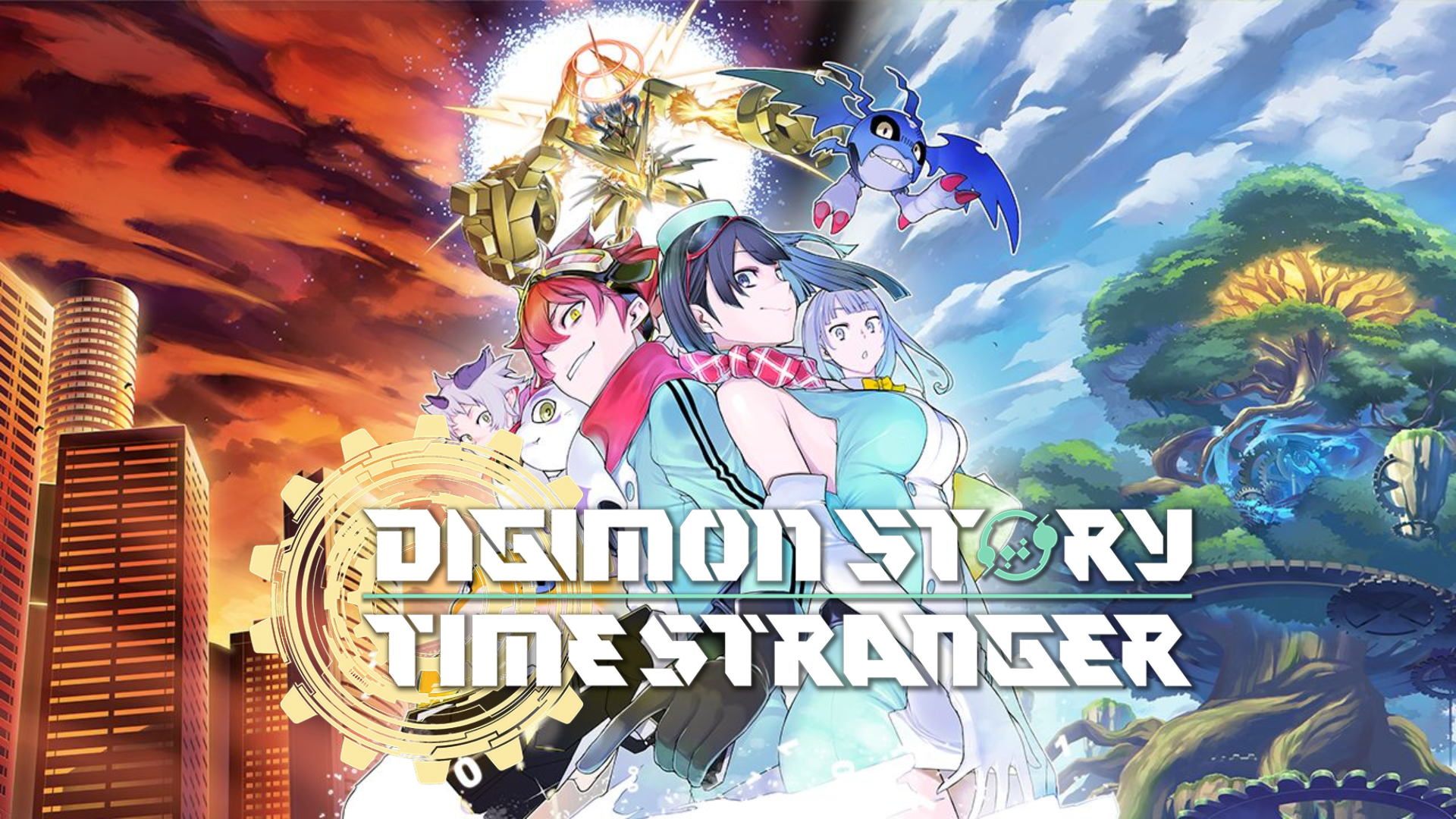
Okay, I’m getting right to the point here – if you were a fan of Digimon Story: Cyber Sleuth, seriously, just go play Digimon Story: Time Stranger. I have a feeling you’re going to absolutely love it! I’m so excited about this game, I just had to say it upfront.
Digimon fans have been eagerly waiting for a high-quality, large-scale game for a long time. While past Digimon games, like the ‘World’ series, have offered a good experience of raising Digimon and exploring the Digital World, they haven’t fully captured everything fans have been hoping for.
But Digimon Story: Time Stranger is different. It’s not only the best-looking Digimon game to date, but it’s clearly been made with a lot of love and specifically for longtime fans. While I wouldn’t call myself a Digimon expert, I’ve been a fan for years – I’ve seen every anime, completed both Cyber Sleuth games, and always try out the newest releases.
Writing this review was challenging because I’m a long-time Digimon fan, which naturally makes me biased. However, I also wanted to evaluate the game objectively as a turn-based RPG. While existing Digimon fans will likely love Time Stranger, it probably won’t appeal to those unfamiliar with the series.
A New Odyssey
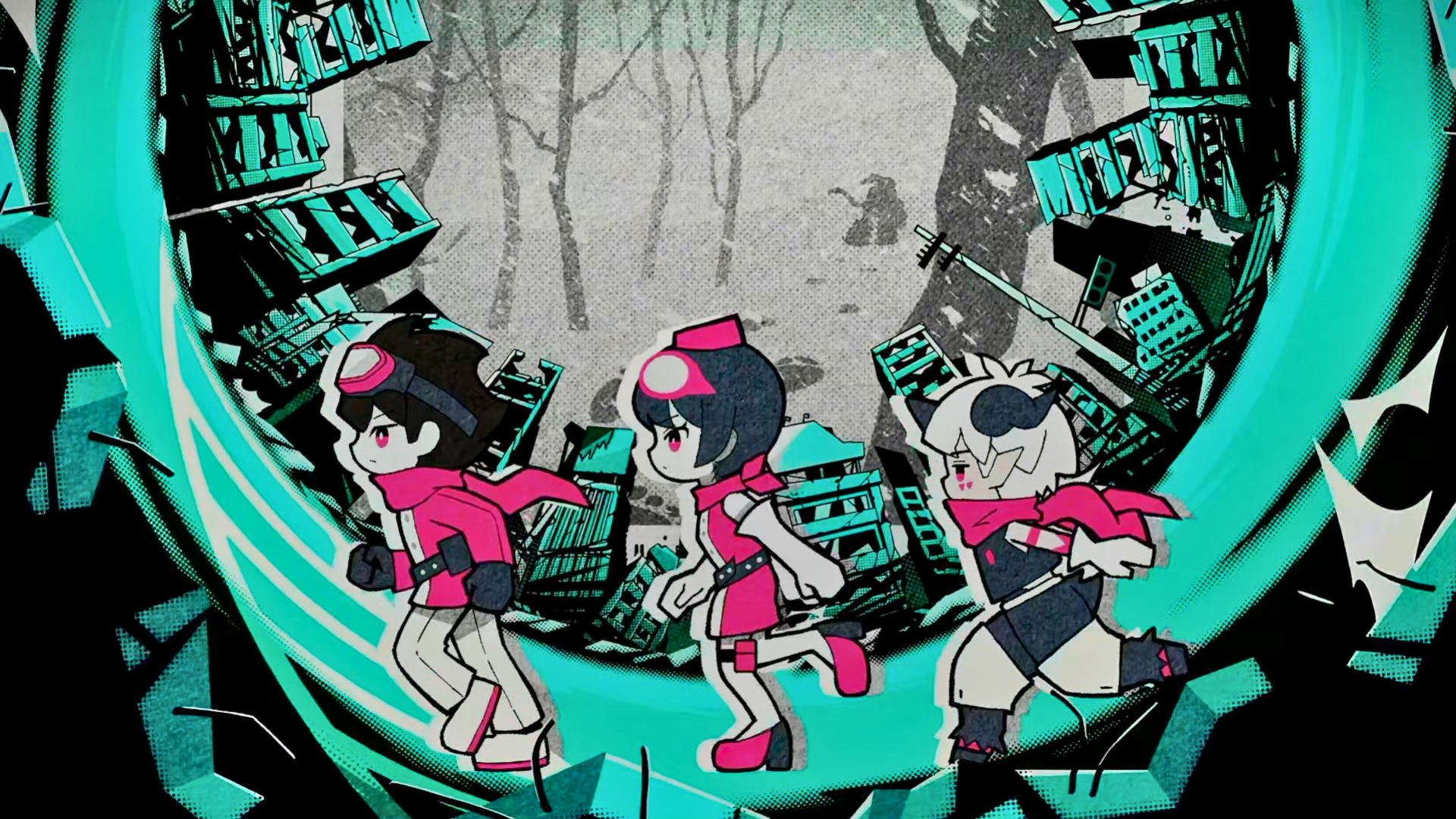
The game begins with a choice: you play as either Dan Yuki or Kanan Yuki. One character is silent and the one you control, while the other becomes your voiced guide, helping you complete missions as an agent of ADAMAS. ADAMAS is an organization that investigates strange and unusual events called anomalous phenomena.
These strange occurrences include everything from unusual creatures to sudden explosions and earthquakes. The organization has observed that whenever these events happen, they’re always accompanied by a type of lifeform called Phase Electrons – what most people know as Digimon.
In Digimon Story: Time Stranger, you start as an experienced member of the ADAMAS team. The game quickly explains the organization and your role, then sends you to investigate a strange event. Unfortunately, things quickly fall apart when Digimon destroy the Tokyo Metropolitan Government Building, and you’re suddenly transported to a mysterious location.
That’s when we realized we’d been sent eight years back in time. Surprisingly, our Operator can still reach us through our Digivices. She explains that the future – or what *was* the present – is facing a rapidly escalating conflict, now known as the Shinjuku Inferno, which threatens to become a global disaster. It’s now our job, while in the past, to find any information we can to prevent this catastrophe from happening eight years from now.
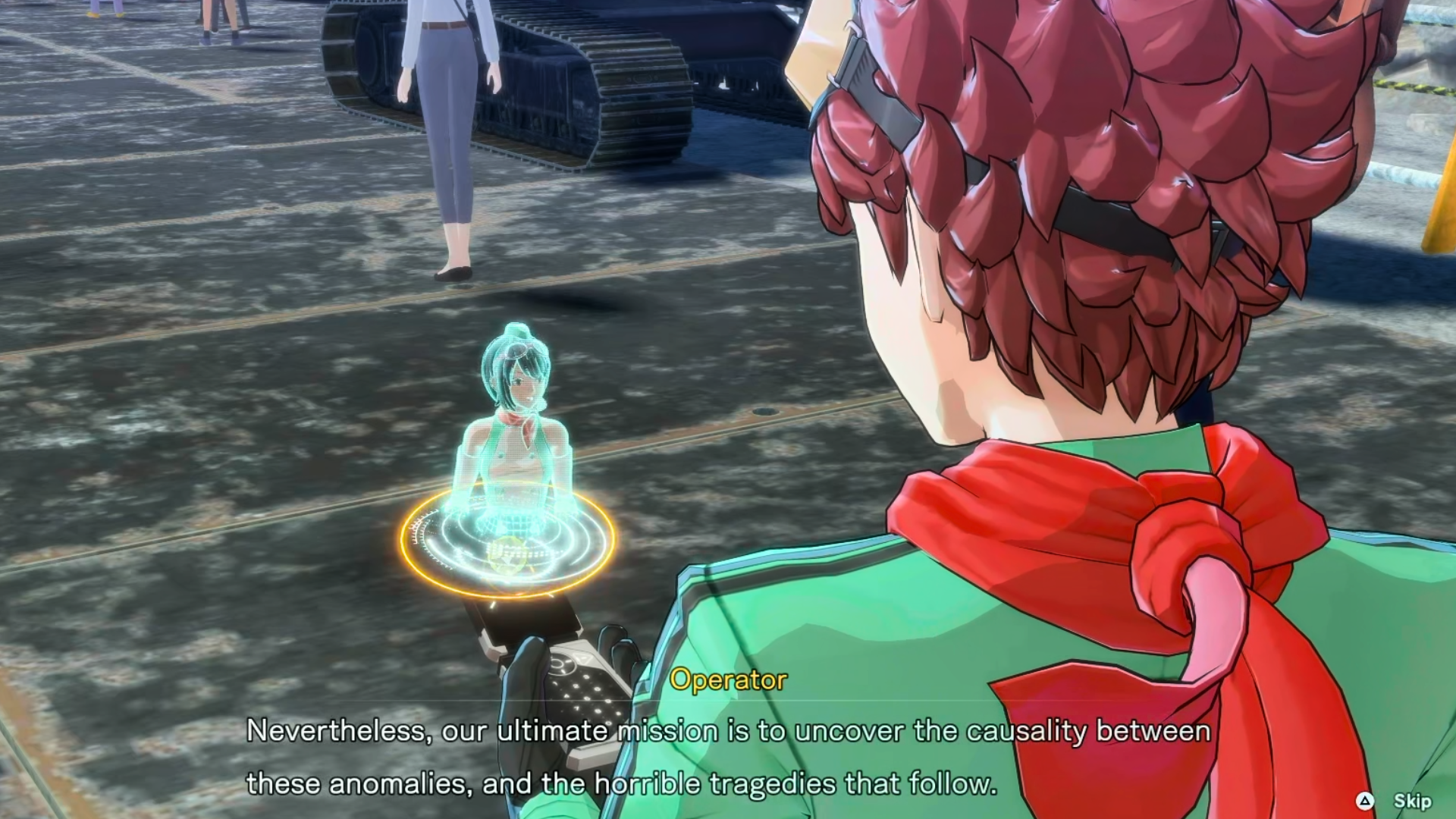
Our main character is an agent specifically tasked with handling these strange events, giving them both a personal connection to the story and a professional obligation to fix things. This isn’t a case of someone stumbling into a crisis – they’re uniquely equipped to deal with it, especially since they’re the only one who can travel back in time to prevent the end of the world. It’s a really interesting setup, and a welcome change of pace for a JRPG.
The main character doesn’t speak, which initially bothered me, as it’s a common trope I often dislike. However, it wasn’t as poorly handled as I feared. Throughout the game, you can choose what to say in conversations, though these choices don’t change the overall story – they only affect how the other character responds. These dialogue options generally fall into three types: straightforward, curious, or playfully sarcastic, and I actually found the sarcastic options quite amusing.
Our hero doesn’t speak, so they’re joined by two key companions who do: the Operator and Inori Misono. Inori is an ordinary girl unexpectedly pulled into a conflict between the real world and a digital one, alongside Aegiomon, a mysterious Digimon. As the story unfolds, a strong connection forms between these three characters, and it’s this bond that powers the entire narrative.
No other Digimon game has ever looked as good as Time Stranger.
Honestly, what really grabbed me about Digimon Story: Time Stranger is how much it focuses on the characters. We quickly learn what’s at stake, and the game does a fantastic job of making you really *care* about the Digimon and people who are affected by the world being in danger. It slowly introduces a bunch of different Digimon – some play bigger roles than others – and some really memorable human characters too.
The characters feel genuinely real and contribute to the story, even in small ways. Every conversation or encounter with a Digimon, big or small, feels meaningful as you play. The game’s time travel element is also a clever fit for the Digimon world, especially considering their ability to evolve.
The Pitfalls Of Time Travel
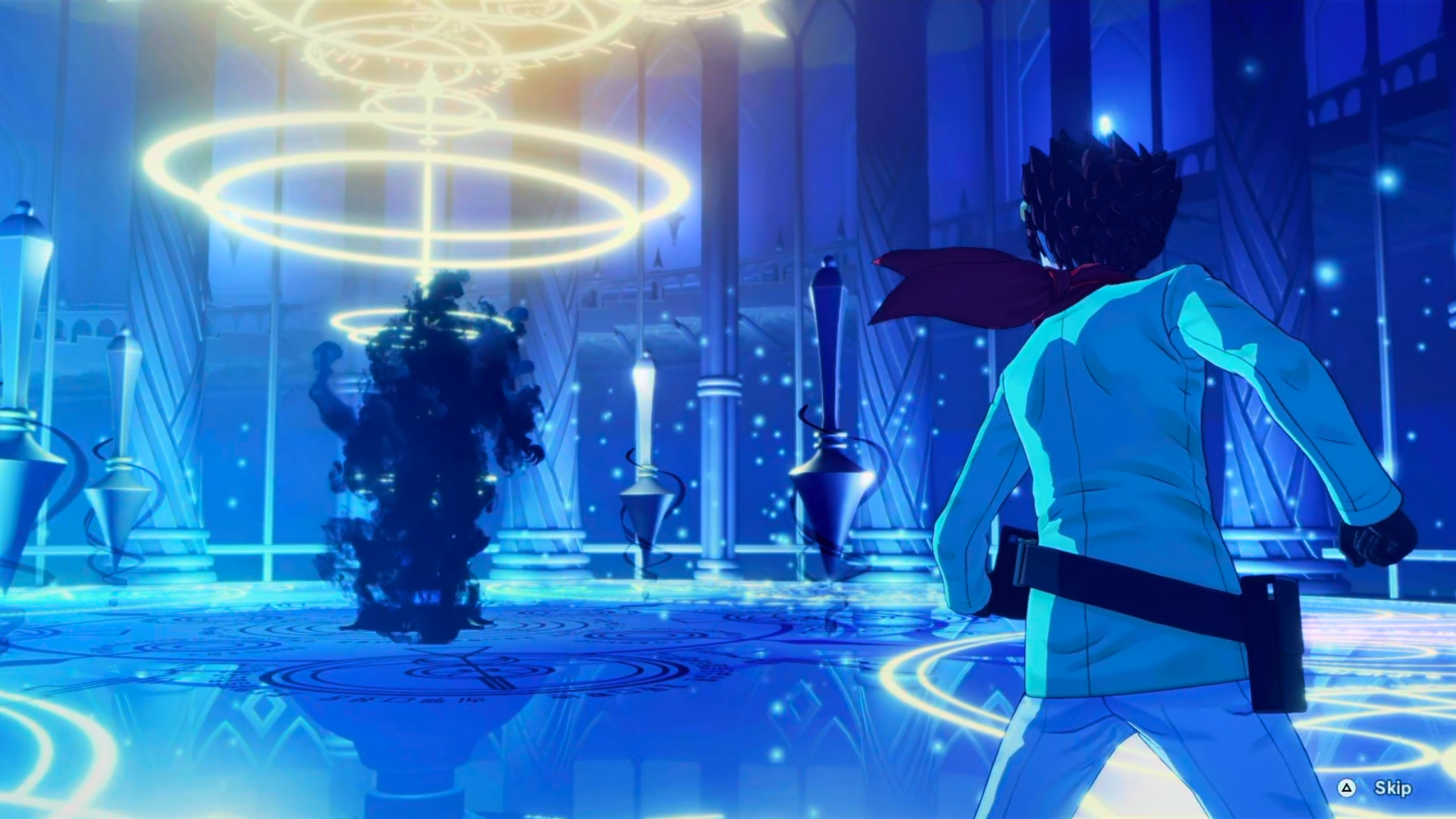
But there’s a catch. Time travel is a really difficult concept to make believable in stories. I’m not a scientist, and I don’t need time travel games to be perfectly accurate, but if a game creates its own rules for how time travel works, it needs to follow those rules consistently.
Initially, the story, Time Stranger, adheres to the rules it establishes for itself. But as it progresses, those rules are broken seemingly at random to move the plot forward. While the ending is ultimately rewarding and I was able to enjoy the story despite these flaws, the inconsistencies are still noticeable.
One problem with the game is that the story starts slowly. While this is common in Japanese role-playing games, it doesn’t make it any better. For the first ten to fifteen hours, depending on how you play, the game feels slow and doesn’t really progress. It’s mostly an introduction to the game’s two worlds – Shinjuku and the Digital World – and involves a lot of revisiting the same areas.
However, once the story truly gets going, it’s fantastic. It takes a surprisingly clever turn with unexpected storylines that kept me hooked, wanting to see what would happen next. Combined with beautiful visuals, smooth cutscenes, and exciting animations, it’s a really enjoyable experience.
At Its Prettiest Yet
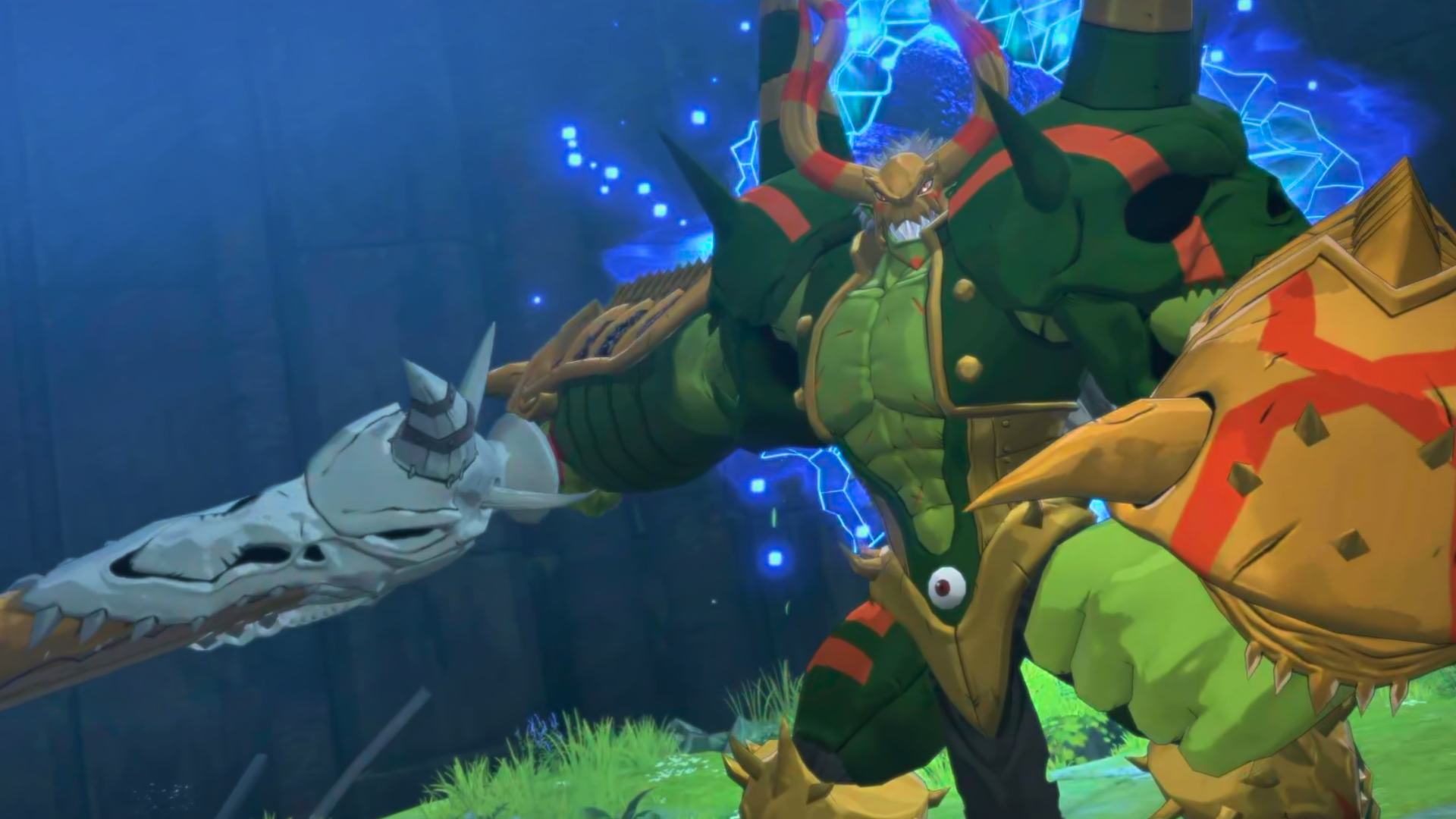
Wow, I have to say, Digimon Time Stranger is the best-looking Digimon game I’ve ever seen! The colors just pop, and it’s full of so much personality – it’s truly stunning. What I really love is how each area of the Iliad feels unique, and it makes sense because the Digimon you find there really fit the environment. It’s a shame it’s not a fully open world like some of us wanted, using a stage-select menu instead, but honestly, each area is so well designed, it doesn’t even bother me that much!
As a fan, I have to say the music in this game is incredible! Every area has its own perfect soundtrack that really pulls you in. And the music during boss fights? Seriously epic – those tracks deserve all the applause!
The only real issue I had with the game’s music was the sound design. During battles, each Digimon constantly shouts the name of its attack, which quickly became repetitive and overwhelming. It turned fights into a noisy mess, making it hard to enjoy the music. I even found myself pausing sometimes just to listen to the soundtrack without all the yelling.
The game also features voice acting, which is generally good and helps you feel more connected to the characters, though it’s not perfect. While the main story is mostly voiced, not every line is. A welcome addition is that characters now have facial expressions, which keeps you immersed in the story – something that was often missing in the previous game, Cyber Sleuth, where characters often looked blank.
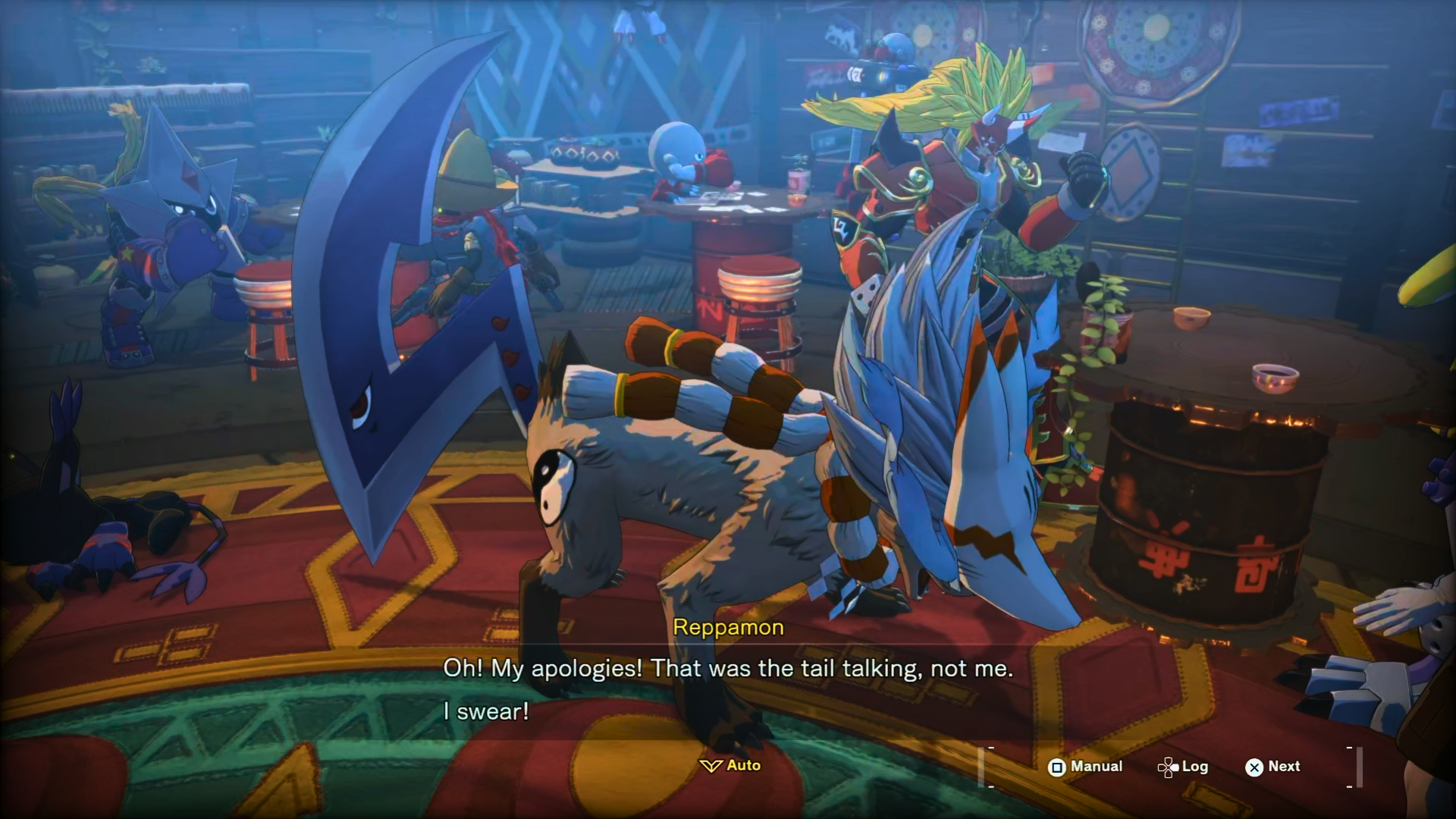
The atmosphere and story work well together, creating a strong foundation. However, the game isn’t perfect; some moments feel awkward, and the writing could be smoother. Occasionally, characters explain things unnecessarily, as if the game doesn’t think players are paying attention. It’s frustrating to say, but *Time Stranger* relies too much on explaining things instead of letting the story unfold visually.
How often do we encounter situations where someone who could be an ally doesn’t bother to understand our side of things, and immediately rushes into conflict? This story relies on familiar themes often seen in Japanese anime, particularly shōnen series. I personally enjoy these stories – I’m a fan of narratives about the strength of friendship and characters finding power when it matters most – but I admit they can sometimes feel a little unrealistic.
Even with its flaws, I really enjoyed Digimon Story: Time Stranger. It’s packed with references that longtime Digimon fans will love, and it was incredibly satisfying to find them. While fans will feel a strong sense of nostalgia, newcomers might find the story a bit slow and rely on some familiar tropes if they want to see it through to the end.
Digivolution Of The Battle System
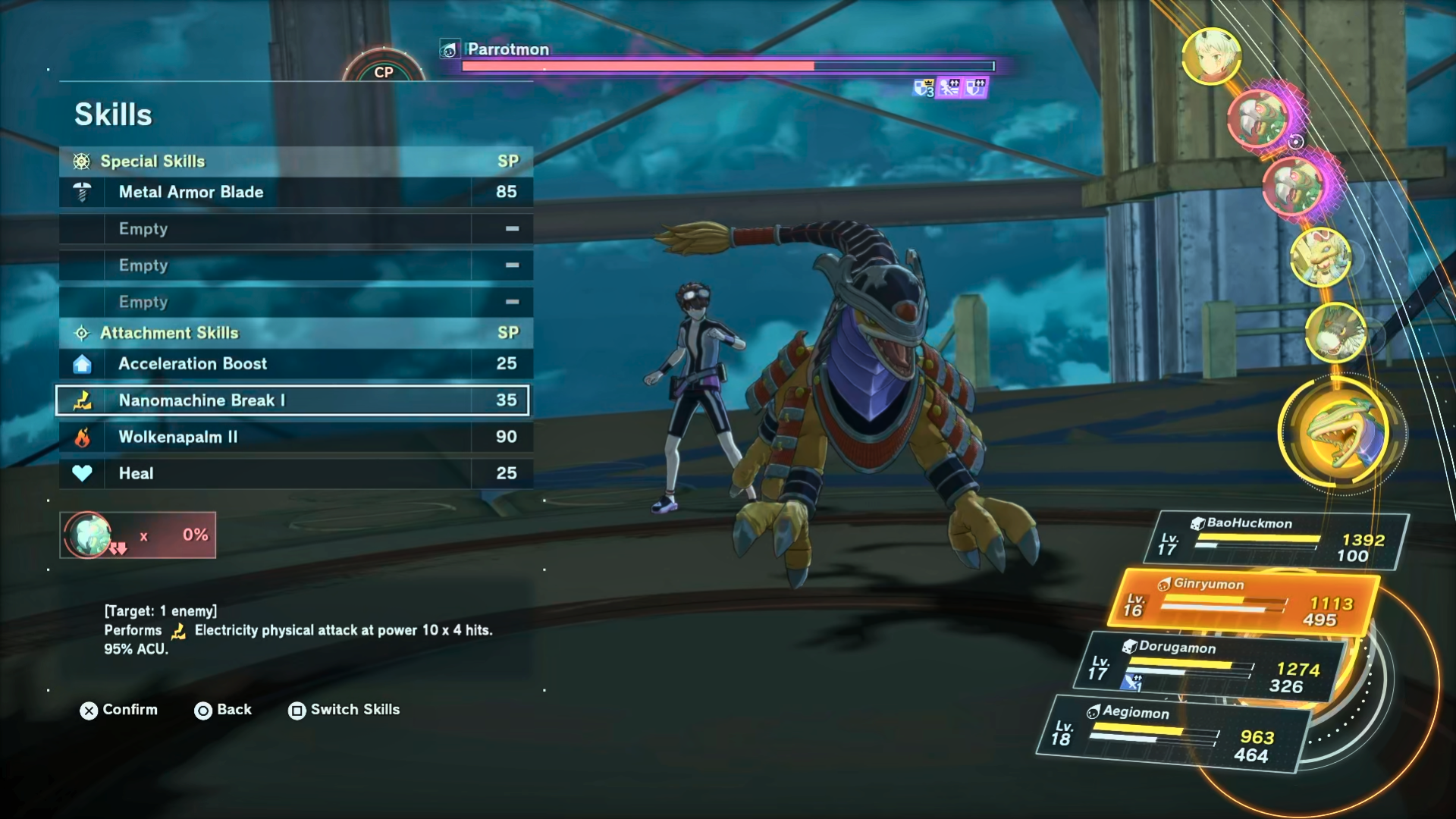
Okay, so when the story slows down in Digimon Story: Time Stranger, that’s when you *really* get into the game. It uses the same battle system as Cyber Sleuth, which I actually really like! You can have three Digimon in your active party, and you can bring along three more as guests. Battles play out with a timeline showing who goes when, and when it’s your turn, you just pick what you want your Digimon to do. It’s a classic turn-based system, but it works so well!
Every battle in this game comes down to two things: a Digimon’s type and the type of attack it uses. Digimon types work like a simple game of rock-paper-scissors – for example, Vaccine types are strong against Virus types but weak against Data types. Virus types are strong against Data types, and so on. There are also neutral types like Free and Variable, which don’t have a strength or weakness against others.
Digimon also have elemental strengths and weaknesses, like being strong against fire but weak against ice. If a Digimon uses an attack that exploits an enemy’s weakness – for example, a fire attack against an enemy weak to fire – it will deal significantly more damage, even triple damage. Because you can scout your opponent before each battle to learn their resistances and weaknesses, combat focuses more on smart strategy than just using your most powerful move.
Playing Digimon Story: Time Stranger feels very smooth and efficient – most of the weaker enemies are easily defeated and don’t really provide much of a challenge.
The game features different types, like Dragon or Deity, and certain attacks are super effective against them. I initially stumbled upon these interactions more by chance than design, so I didn’t focus on them much. Instead, I usually tried hitting Digimon with every element available until I discovered what they were weak to, then I’d defeat them quickly.
At first, I was really enjoying the game. Each new enemy felt like a puzzle to solve, and I loved experimenting with all my Digimon’s abilities. They each have unique skills, plus extra slots for more, letting me try out lots of different attacks. I ended up trying every element I could, just to figure out what was most effective.
The Game Plays By Itself
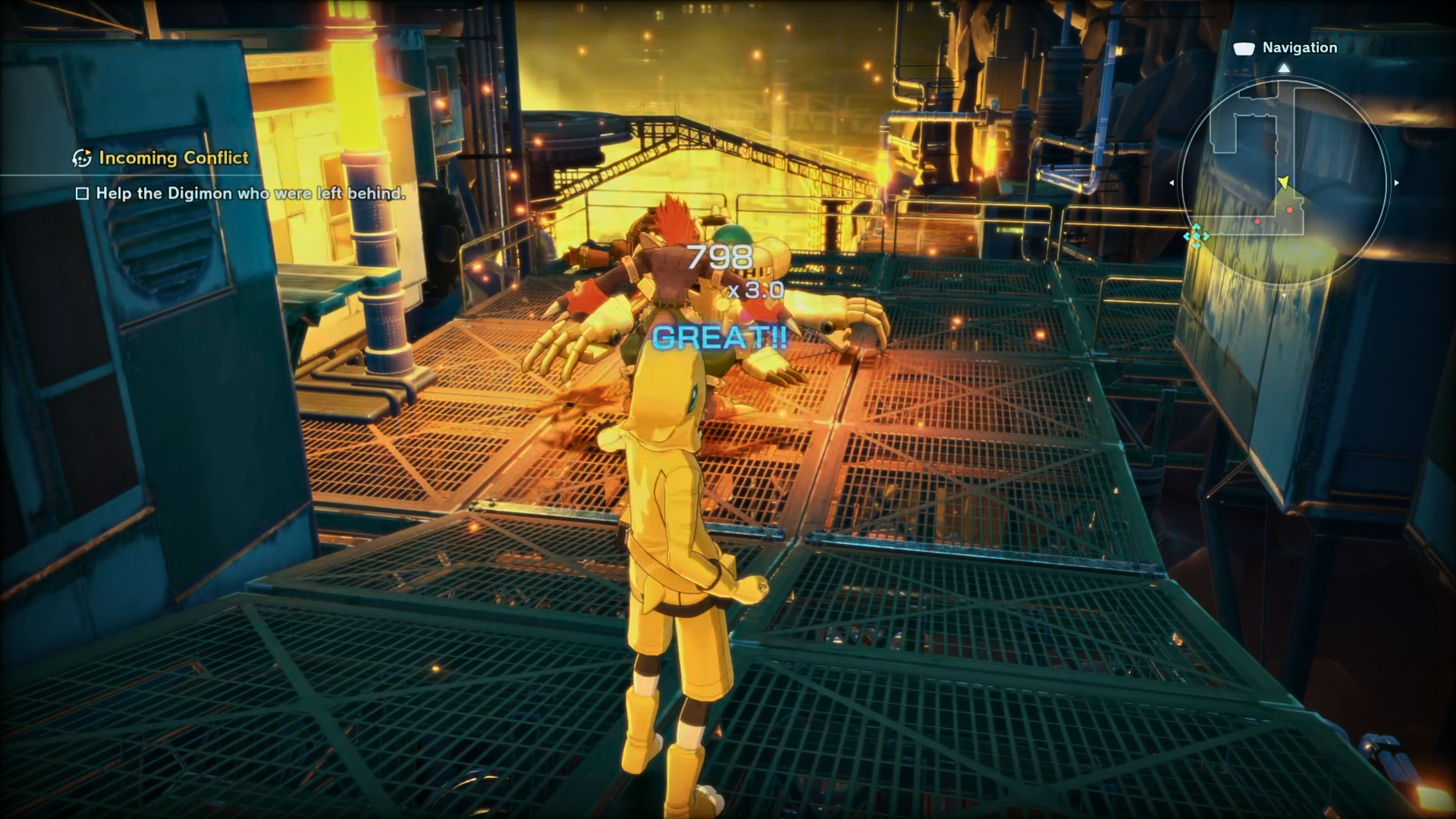
The main issue I have with Digimon Story: Time Stranger is how easily players can break the game’s intended experience. It’s not necessarily a flaw, but it’s something that detracts from enjoyment. A video about the game pointed out that good game design involves protecting players from unintentionally ruining their own fun, quoting Sid Meier. This idea was reinforced by Soren Johnson, who noted that players will often find ways to exploit games if given the chance, ultimately making them less enjoyable.
This might seem like a bit of a side note, but stick with me. The gameplay in Digimon Story: Time Stranger is so smooth and efficient that most enemies feel like a quick task rather than a genuine obstacle. After spending several hours in the same area, repeatedly fighting the same creatures, I ended up using features commonly found in turn-based RPGs to make things easier: speeding up battles and letting the game fight automatically.
I spent almost an hour digivolving and de-digivolving my babies, and it was glorious.
I usually started battles by immediately attacking the enemy with my Digimon, aiming to defeat them in one hit if possible. This worked about 90% of the time, and often meant fights ended very quickly. It felt like the game was practically playing itself, as I was repeating the same strategy over and over.
After the initial boss battles, regular fights felt pointless. While the auto-battle system wasn’t perfect, I could easily win by tweaking my Digimon team to exploit enemy weaknesses in each area – it was a simple formula for effortless victories.
The game started off pretty slow, but it became much more engaging once the story really got going. Before that, all I could do was collect new Digimon and try to make mine stronger. However, the boss battles were amazing – they definitely kept me focused! Even though each boss used similar tricks, it was still a welcome challenge.
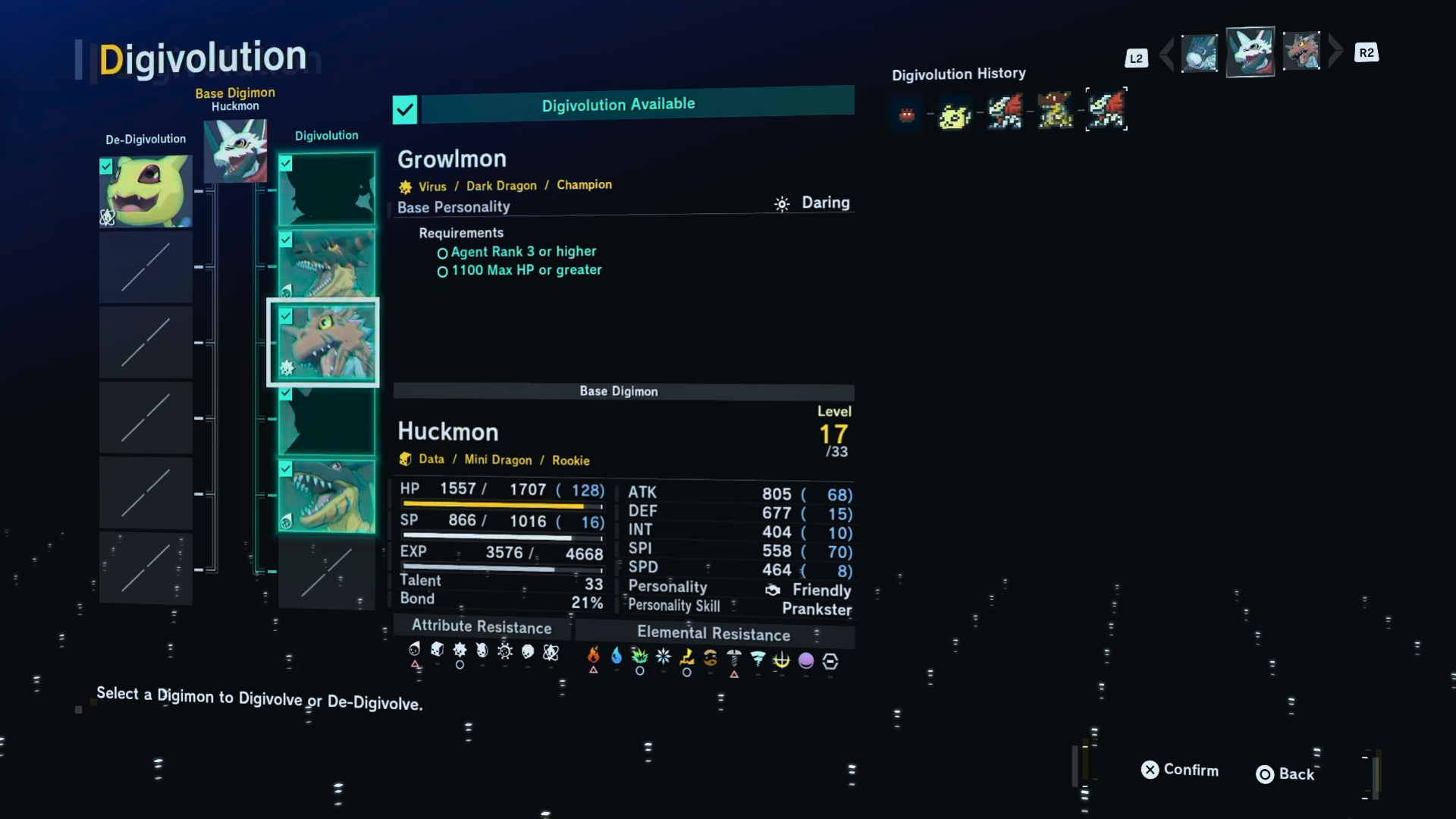
It finally clicked for me when I had enough Anomaly Points to unlock the skill tree that helps all my Digimon – and when my Agent Rank hit level 5, Ultimate digivolutions became available! I seriously spent almost an hour just digivolving and de-digivolving everyone, and it was amazing. But honestly, even though it’s a little sad, every easy battle feels a bit pointless. I mean, how else am I supposed to level up all 475 Digimon efficiently and get them all registered?
I don’t know if the developers originally planned for players to approach the game this way, but I definitely did. I wasn’t playing the battles for fun; I was playing to collect Digimon, help them evolve, and unlock new abilities and forms – it was all about the reward. Because of this, when a tough boss appeared, I usually already had a Digimon perfectly suited to defeat it based on its weaknesses.
After that, I really started to enjoy myself. I’ve always been a completionist – I love getting every achievement in games, especially JRPGs and earning platinum trophies. Some therapists think it’s a way for me to cope with something deeper, but I don’t really worry about it.
Finding new Digimon to document in my in-game guide, or even just spotting ones I recognized from the anime, kept me hooked for all 60 hours I spent playing Time Stranger. But is this RPG for everyone? Definitely not. Will Digimon fans and people who love collecting creatures have a good time? Absolutely.
Closing Comments:
Digimon fans have been waiting a long time for a fully-featured game, and Digimon Story: Time Stranger delivers. It’s the game many who grew up with the original Digimon series always hoped for, with a satisfying story and an incredible roster of over 400 Digimon to collect. While the time travel plot and writing can be a bit messy, the ending is fantastic. However, if you’re simply looking for a new turn-based RPG without any connection to Digimon, you might not be captivated, especially in the beginning.
Read More
- They Nest (2000) Movie Review
- Brent Oil Forecast
- ‘M3GAN’ Spin-off ‘SOULM8TE’ Dropped From Release Calendar
- Super Animal Royale: All Mole Transportation Network Locations Guide
- Jynxzi’s R9 Haircut: The Bet That Broke the Internet
- Ripple’s New Partner: A Game Changer or Just Another Crypto Fad?
- Avengers: Doomsday Trailer Leak Has Made Its Way Online
- Code Vein II PC system requirements revealed
- bbno$ speaks out after ‘retirement’ from music over internet negativity
- Spider-Man 4 Trailer Leaks Online, Sony Takes Action
2025-10-10 17:45